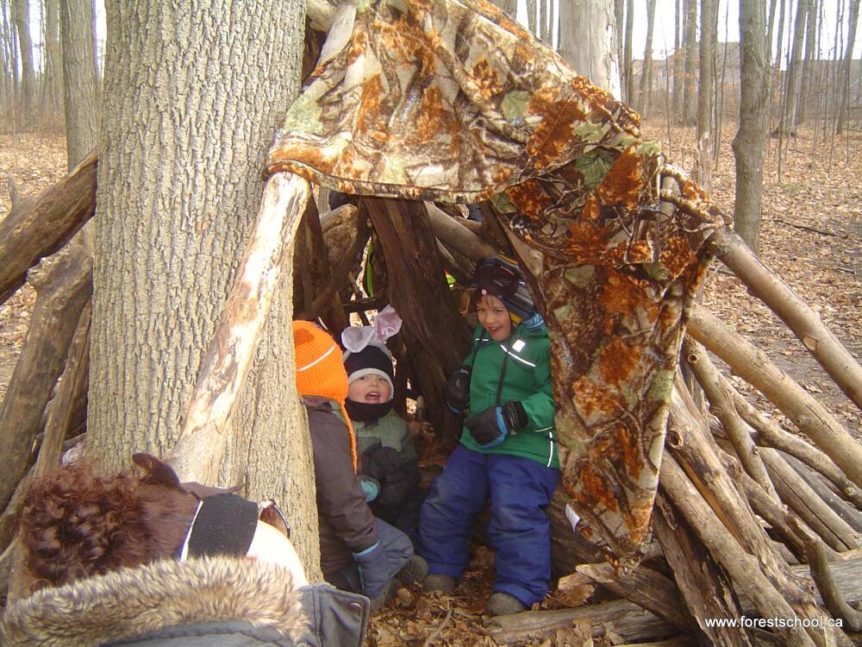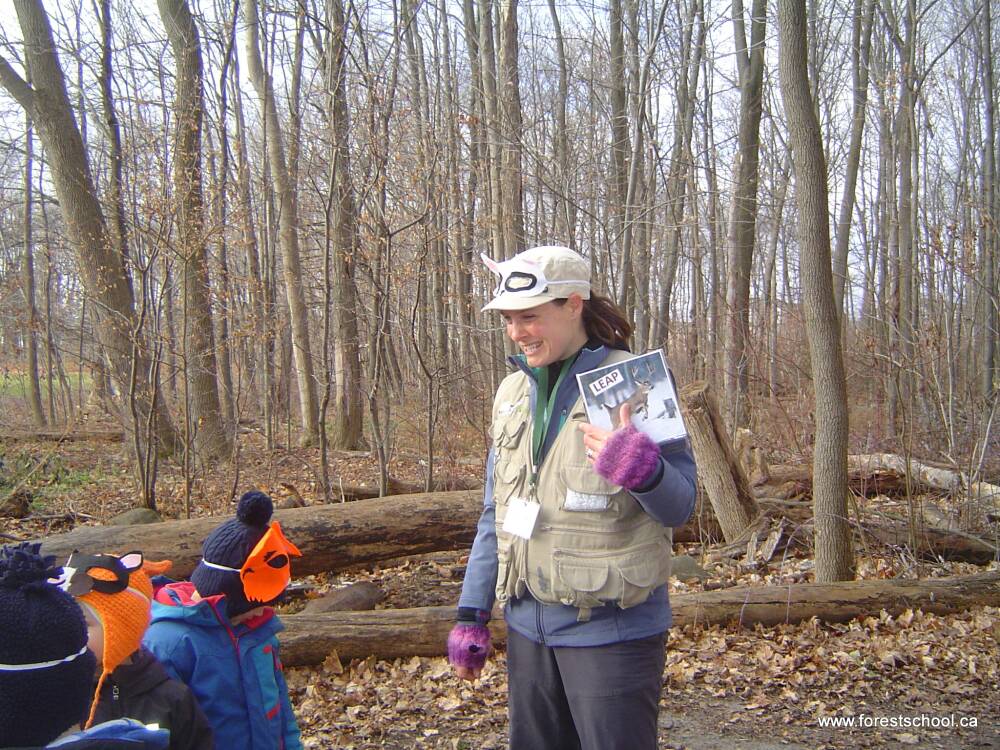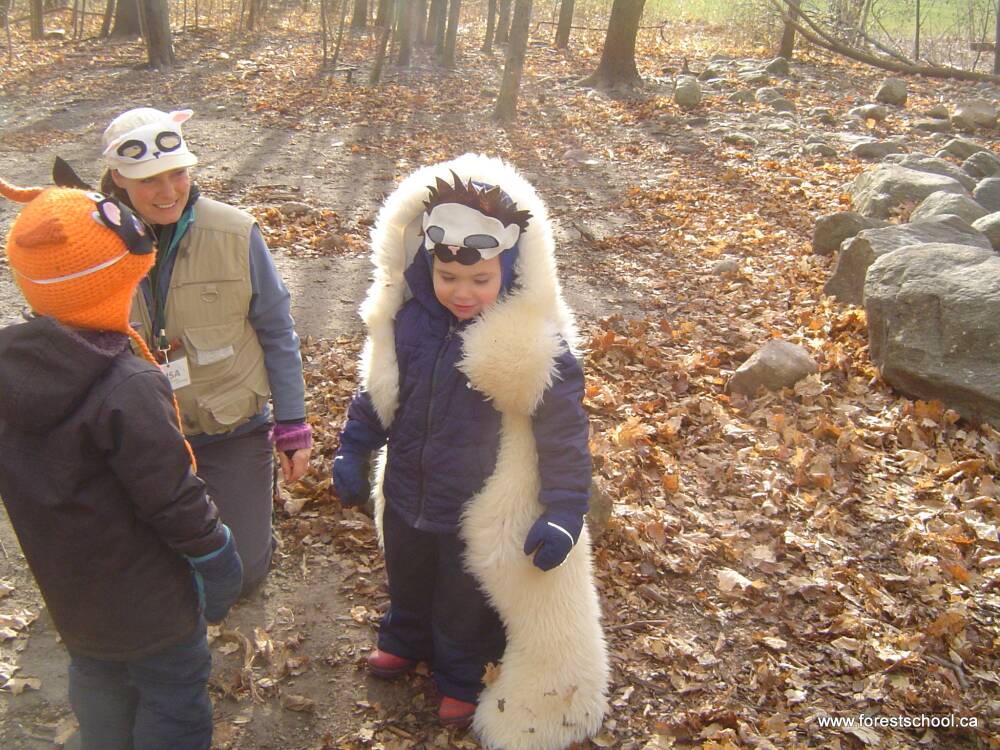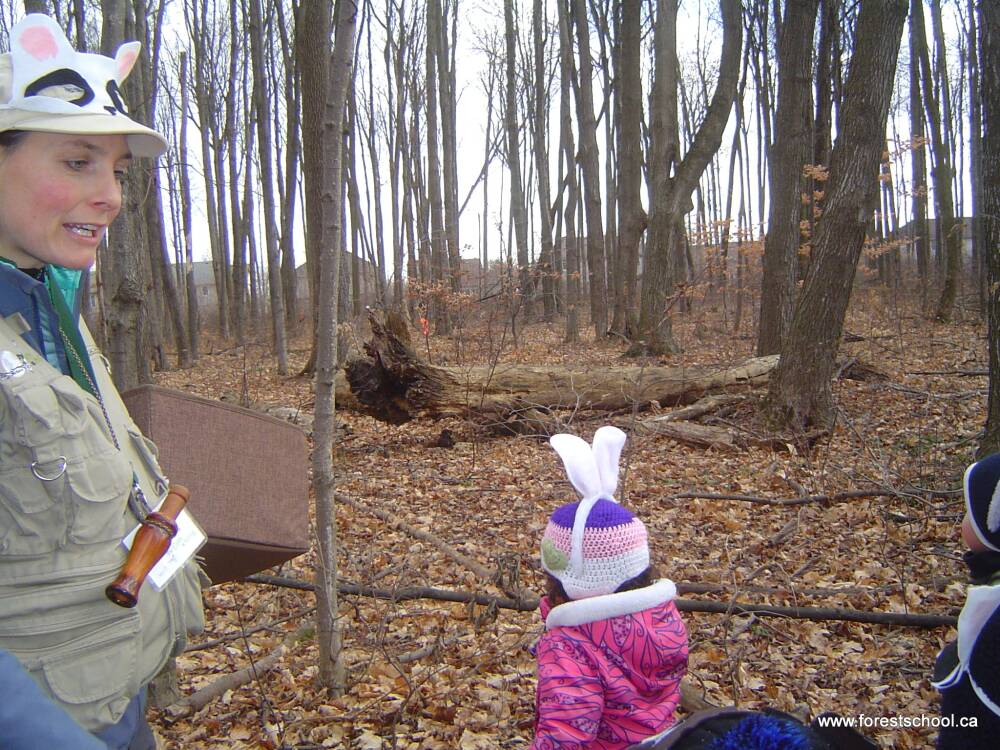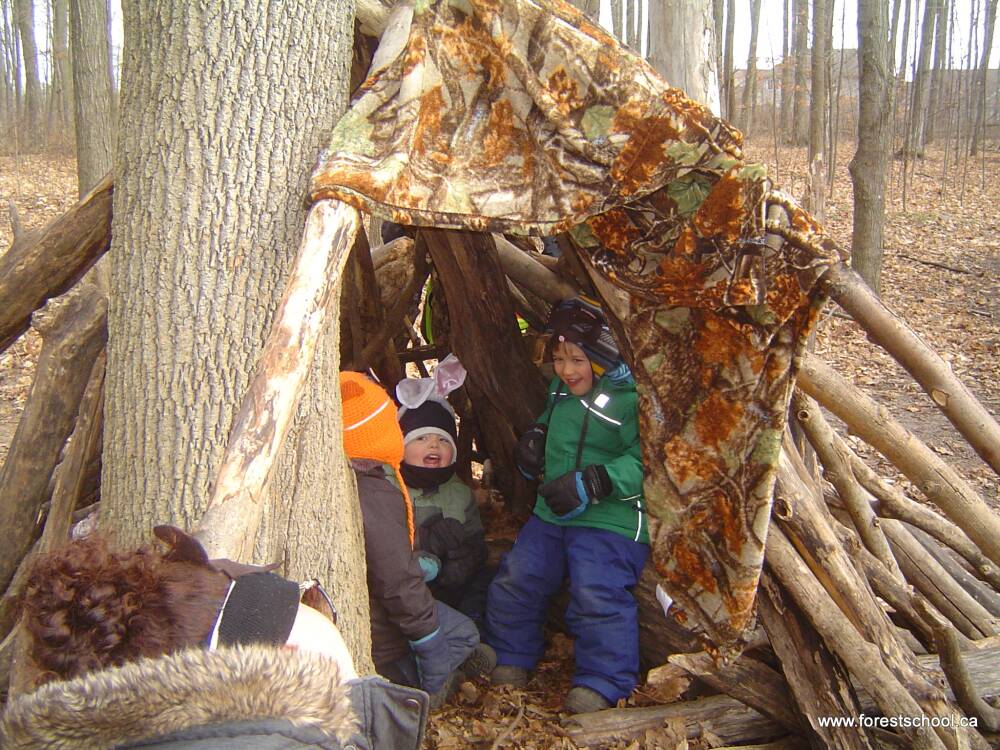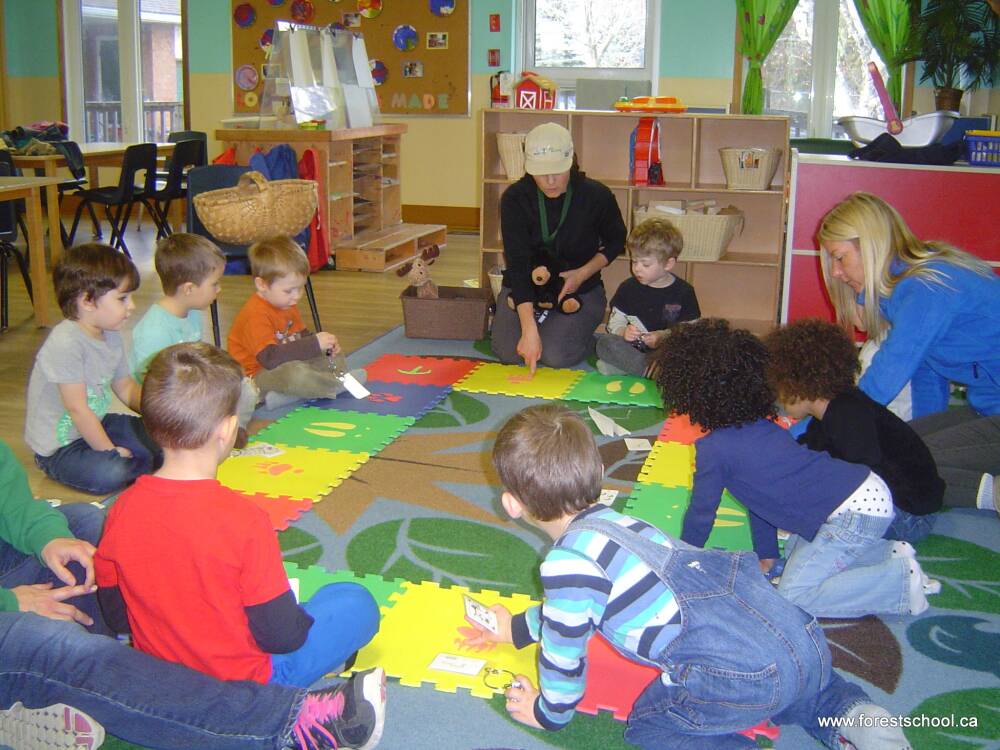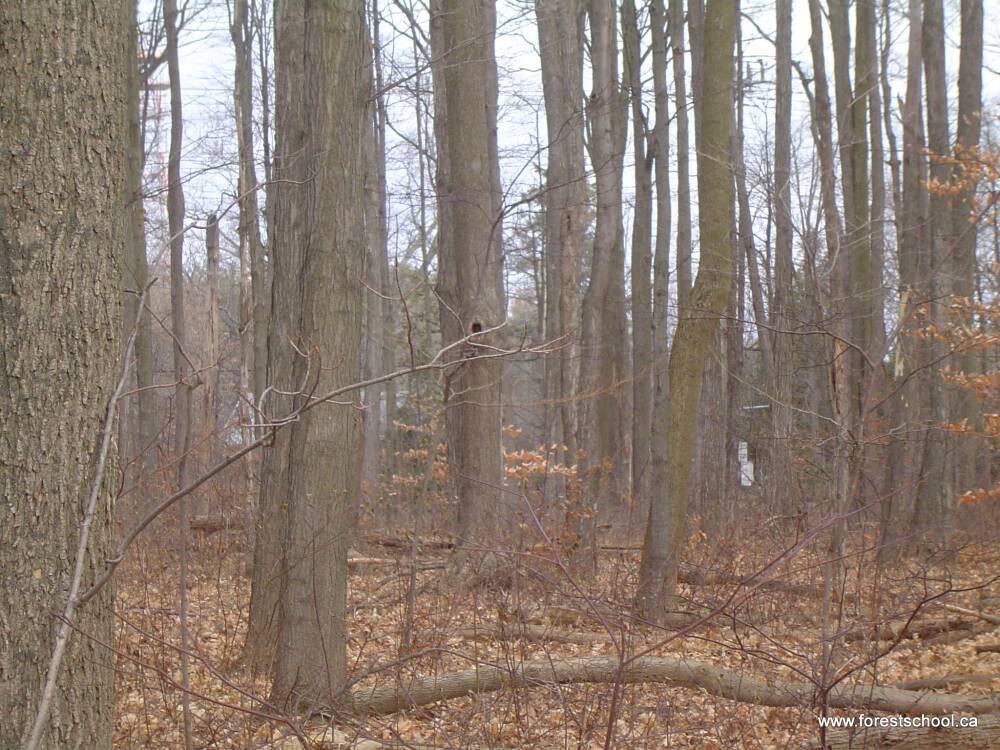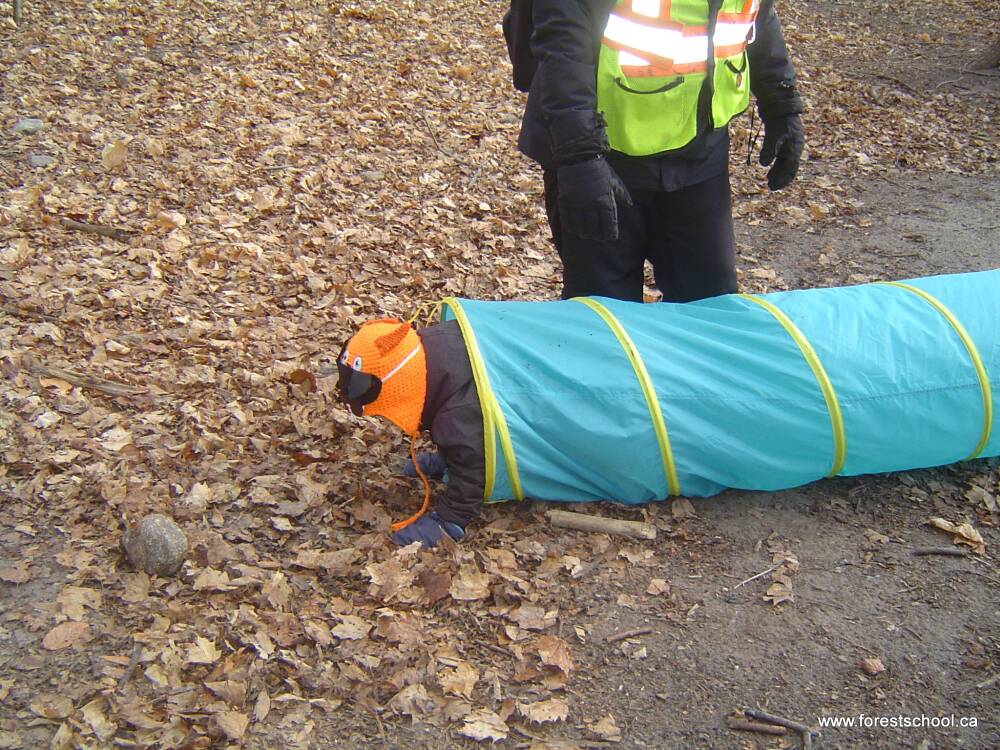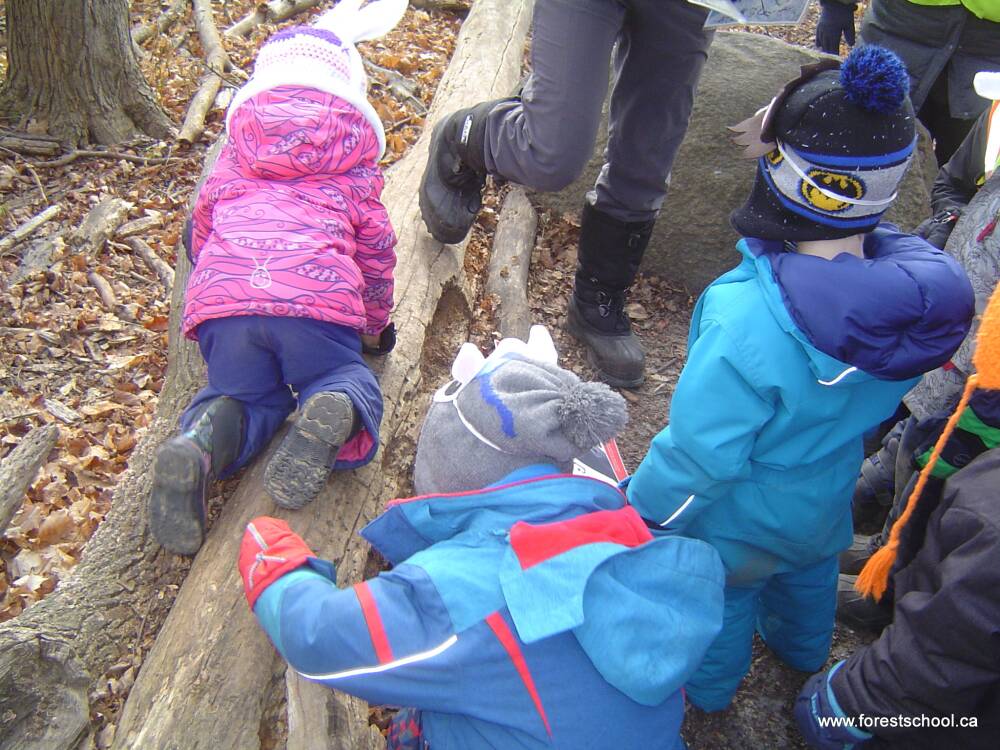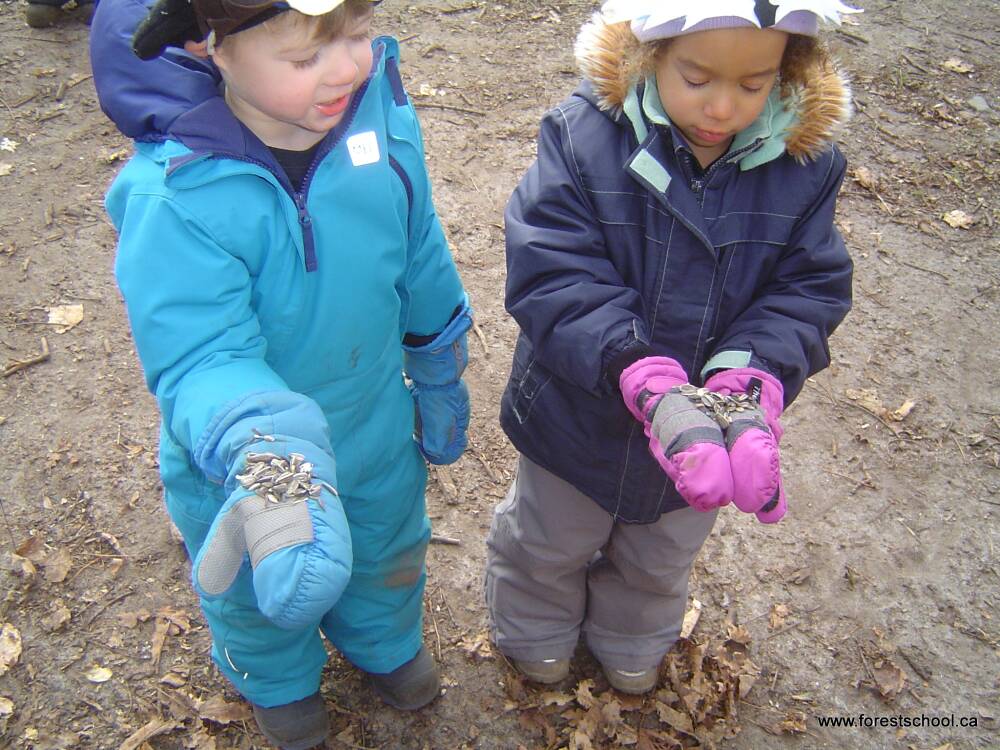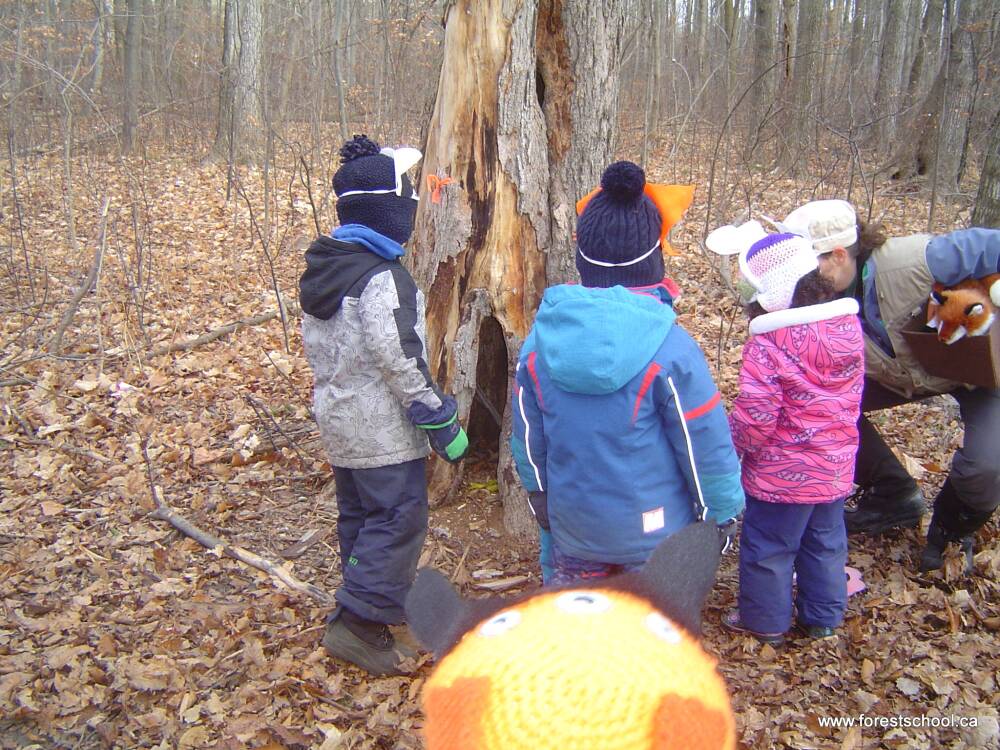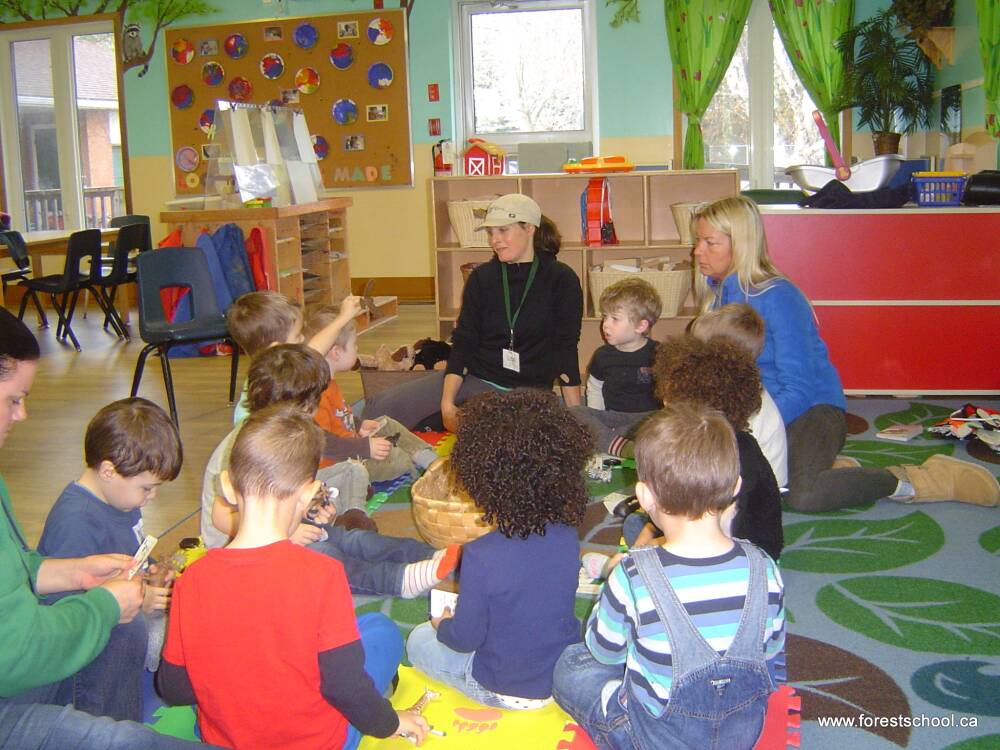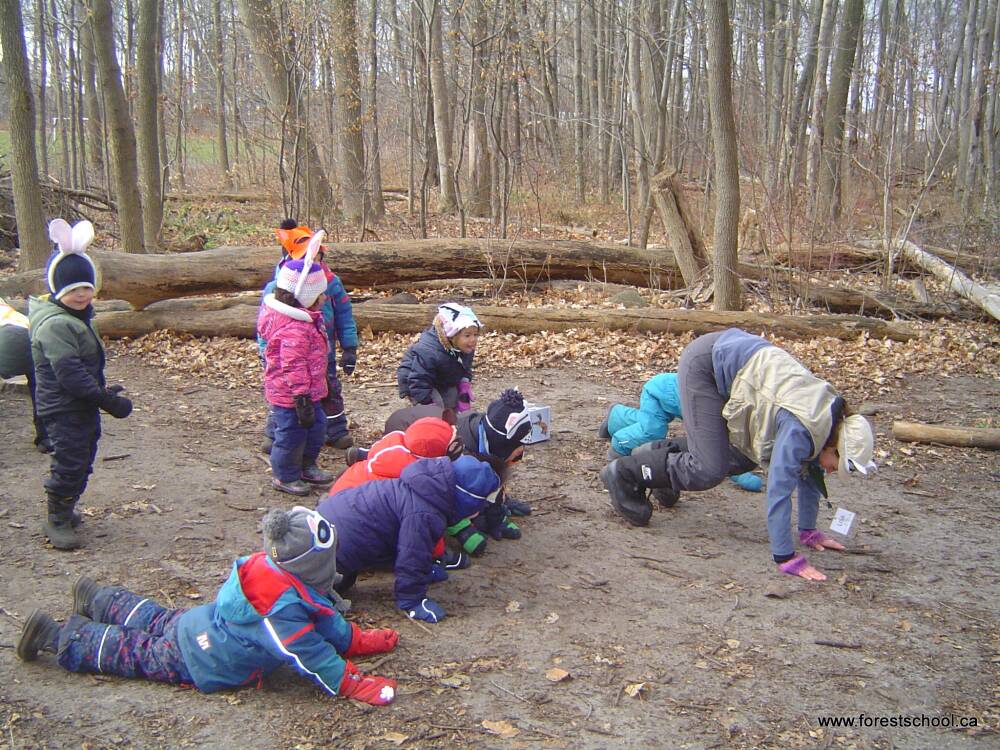Lisa levez (guest blogger)
Discovery Forest Kindergartners stayed warm today while learning how to move like forest animals that they may see in the snow tracks of this winter! The ground was frozen this morning – not yet snowy – and the temperatures were just below freezing. An excellent time to introduce our Wild Wednesday tracking theme `Animal Movement, Winter Adaptations and Track Recognition`- getting ready for tracking in the snow!
During introduction, we read ‘Over in the Forest’ by M. Berkes and J. Dubin. and learned about active winter animals that we may see in our forest area this winter. Friends each picked an animal to be for the morning (choosing forest animal felt masks) and headed outdoors.
In the forest, kindergartners bounded like weasels, hopped like rabbits, walked and leaped like deer and learned that the way animals move affect the tracks they leave behind. Many animals have a main gait or way of moving most of the time (e.g. lynx walk stepping carefully into their own tracks, and weasels bound in a two-by-two pattern mostly).
While acting as forest animals, friends learned about them for example, eastern cottontail rabbits stay brown all year long – unlike snowshoe hares that change from brown to white during winter. You may see Eastern cottontail tracks in your driveways and or gardens this winter and the kindergartners see their tracks along the edge of their forest area.
Friends learned about some ways that animals survive the winter and stored food like chickadees in many places for the winter, grew white fur like a weasel to blend in with the snow, and hibernated like bears in the bear den.
Hibernating means their bodies slow down so much that they do not have to eat and can sleep through the winter. Kindergartners searched for homes of animals that live in the forest area (e.g. tree hollow of the raccoon, squirrel dreys and tree cavity nests, chickadee roost cavities, insect galls, hibernating carpenter ants). The ‘squirrel’ kindergartner kept track and we counted over 12 squirrel dreys!
Back indoors, we sang our closing song and distributed some mystery track Christmas tree ornaments along with some tracking guides to help identify them – good luck!
If you are looking for alternative gift ideas, you might be interested in gifting a membership for an organization like Ontario Nature (https://www.ontarionature.org/give/membership/). Another idea that has both a donation and an option for a cuddly gift are World Wildlife Fund symbolic adoption animals. There are many fun crafts that can be made this Christmas – parents may remember this one from childhood – making recycled cup telephones – they really do work!
Remember the Tiffin Centre’s Christmas Bird Count for Kids Saturday, January 6th 9 am til noon! Events are on the NVCA website here: https://www.nvca.on.ca/events-education/events
The snowy owl has returned for the winter! You may see them along backroads (they like to hunt in wide-open spaces) often spotted on telephone posts or roadside perches. Snowy owls migrate from the northern tundra south for the winter in search of more available food. Looking forward to the second Tracking session in January where we will develop our skills to create our animal tracking stories. Happy Holidays!

